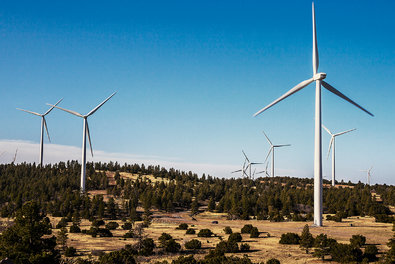
What’s Holding Back Renewable Energy?
Oxford researchers recently predicted precipitous growth in green energy over the next 10 to 15 years, decreasing global need for fossil fuels. Yet, the largest renewable energy company in the world, SunEdison, just filed for bankruptcy on the heels of the fall of another clean energy giant, Abengoa. Is the renewable energy sector in trouble? What is holding back more immediate success in the industry?
* predict = 예측[예견]하다/ precipitous = 급작스러운; 가파른, 깎아지른 듯한/ green energy = 그린(친환경, 청정) 에너지/ fossil fuel = 화석 연료/ renewable energy = 재생 가능 에너지 (태양열·수력·풍력 에너지 등)/ file for bankruptcy = 파산 신청을 하다/ on the heels of ~ = ~후 바로[즉시]; 바쁘게/ hold ~ back = ~을 저지[제지]하다
 무엇이 재생 에너지 산업의 더 즉각적인 성공을 저지하고 있나요?
무엇이 재생 에너지 산업의 더 즉각적인 성공을 저지하고 있나요?
1. Solar Energy Will Thrive
Solar module costs have plummeted. Integrating it into the grid is easier.
And governments recognize its social benefits.
2. Subsidies in the Wrong Places Skew Solar’s Power
The value of renewable power is often lower because investments do not always target
the highest-quality resource: Solar goes where the subsidies are, not where the sun shines.
3. Utilities Must Stop Blocking Solar Growth
Some utilities take advantage of outdated laws to prevent solar companies from offering customers
options to lower or eliminate upfront costs of installing solar panels.
4. Owners Need to Understand Energy Use in Their Buildings
Most don't know how much energy is being used and why and so they fail to make energy choices
that would be useful to them.
Sample Essay
Subsidies in the Wrong Places Skew Renewable Energy’s Power
Renewable power has experienced tremendous growth: Wind and solar’s share of total U.S. power generation increased to 5 percent in 2015 from less than 0.5 percent in 2005. This growth reflects both innovation driving down costs and an array of subsidies, including tax credits and grants (about 30 percent of investment costs), accelerated depreciation (15 percent of investment costs), loan guarantees (7 percent of investment costs), and state renewable power mandates, which create valuable credits – worth as much as 50 cents per kilowatt hour for solar in Massachusetts and New Jersey – that complement the revenue stream from power sales. Continued investment in renewable power, however, must confront investment challenges in the power sector.
Innovation has driven lower costs for wind, solar and their competitors. The fracking revolution has drastically lowered the cost of U.S. natural gas, with the price of natural gas delivered to the power sector in 2015 equal to one-third the price in 2008.
As the costs of producing power have fallen, so has the demand for electricity. Since 2010, the U.S. economy has grown 11 percent, but electricity consumption has fallen by 1 percent in part because of subsidies and standards targeting energy efficiency. The absence of a growing power market reduces the need for utilities to invest in new power generation. In some parts of the country, the costs of new wind and solar may appear competitive with new coal or natural gas facilities, but new renewable investment effectively competes with existing, lower-cost power plants.
The incumbent coal-fired power plants also enjoy a large, implicit subsidy. In today’s dollars, the average U.S. coal-fired power plant imposes costs through premature mortality and respiratory illnesses of about 3.5 cents per kilowatt hour. Accounting for the climate change damages associated with burning coal would likely double this cost. Eliminating these subsidies would significantly improve the economics of lower-polluting sources of power.
Even with full pricing of pollution for coal-fired power plants, renewable power typically cannot be ramped up and down in response to short-term swings in power demand: Sometimes the wind blows or the sun shines when people don’t need the power. As a result, utilities may value natural gas capacity more than renewable capacity, since they can dispatch natural gas to meet changes in demand. The value of renewable power is also lower because the investment does not always target the highest-quality resource. Solar goes where the subsidies are, not where the sun shines. Thus, Massachusetts and New Jersey may have relatively low-quality solar, but rank among the top six states in installed solar capacity. And Germany, which has rarely been described as sun-drenched, hosts the most solar capacity in the world.
Given the existing low-cost competition in a no-growth market, renewable developers face tough investment challenges absent new policies. A carbon tax could substantially increase market demand for renewable power and encourage the retirement of pollution-intensive coal-fired power plants.





![]() 무엇이 재생 에너지 산업의 더 즉각적인 성공을 저지하고 있나요?
무엇이 재생 에너지 산업의 더 즉각적인 성공을 저지하고 있나요?






